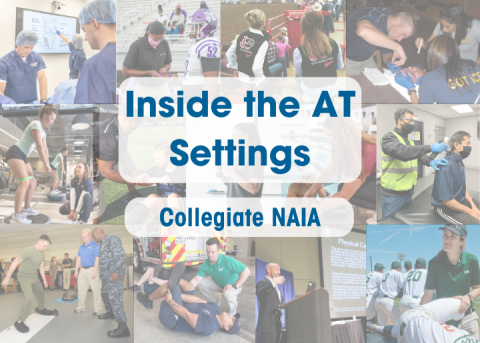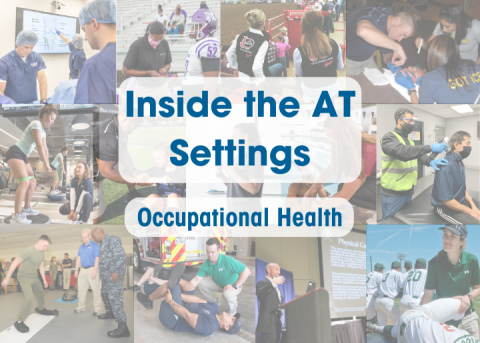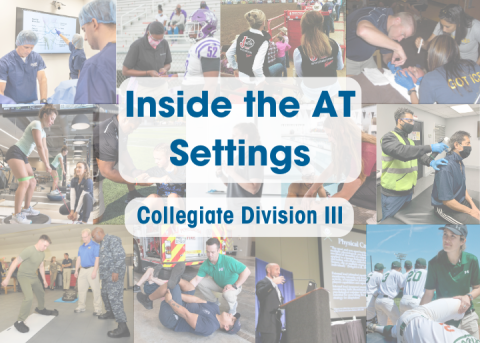
By Kimberly Hansen ATC, LAT, CES
The field of athletic training has evolved significantly in recent years. For some, the focus has shifted from 60-hour work weeks and Friday night lights with the adrenaline rush of an athlete going down, to a place where the “game” is someone’s job and they are caring for a working athlete. The greatest win in this settings is knowing you made a difference in someone’s life and helped them stay on track with their livelihood. These ATs are found in the occupational setting. Traditionally, the occupational and industrial settings include manufacturing, warehouse and distribution centers, utilities, production, office, aerospace, telecommunication and mining, to name a few. This list has been growing continuously.
The percentage of athletic trainers in this field has conventionally been lower than the more traditional athletic settings. There are several factors contributing to this. In 2017, a survey was conducted revealing that of the nearly 500 participants, less than 30 percent of ATs had exposure to this setting while working toward their entry-level degree. Additionally, the job opportunities tended to be few and far between or have carried the perception of a relatively narrow scope of work. However, in recent years, there has been a spike in these numbers as exposure to the setting and the field itself have both grown.
Injury prevention has always been, and still is, the primary focus for athletic trainers in the workplace setting. What has changed is the scope of work and the expertise athletic trainers are bringing to this industry as well as the types of industries utilizing athletic training services.
During the inception of athletic training into the workplace, the primary focus of injury prevention programs was on delivering OSHA first aid care to employees to help address issues, in turn reducing recordable injuries. Now, these injury prevention programs are robust, and while the ultimate goal is still the same, its execution has changed significantly. The athletic trainers learn the “tricks of the trade” of the settings in which they work and become an integral part of the company. They coach on biomechanics and address ergonomic concerns; they teach individuals about their bodies and why they are experiencing aches and pains but more importantly, they teach and educate on how to prevent and self-treat them.
More than 68 percent of the surveyed ATs in this field reported having additional specialty certifications that are used to improve their skillsets and increase their understanding of this industry. Where the direct cost of workers’ compensation claims used to be one of the biggest focus points in regards to work-related injuries, ATs in this setting have helped demonstrate how lost work days, employee morale and productivity and turnover rates have just as big of an impact, albeit more indirect, on the companies bottom-line. Injury prevention programs improve both indirect and direct costs, with some companies reporting cost savings in the tens of millions of dollars. Return-on-investment has reached and occasionally surpassed a 20:1 return on investment in congruence with the establishment and utilization of injury prevention specialists. This has increased the interest in injury prevention initiatives outside of the traditional workplace settings.
There has recently been an increased interest in the benefits of athletic trainers from an injury prevention stand point in public safety. It is no surprise that tactical athletes have higher injury rates due to the physical and frequently aggressive nature of their work. Athletic trainers have been utilized in the traditional injury care and management capacity for years. Nancy Burke, MS, AT Ret., was at the forefront of paving the path into the public safety setting. Her work with Fairfax County Police Department has been invaluable for the field of athletic training. The San Antonio Fire Department has also integrated athletic training into the care of its firefighters. These programs have not only shown cost savings, but have improved quality of care and ease of access to health care for the men and women in public safety.
While there is no question to the benefits of having athletic trainers working in public safety, many departments have had issues with funding a traditional athletic training program or don’t have the force size to justify incorporation. These departments, as well as some of the larger cities, have decided to pursue an injury prevention model traditionally seen in the workplace setting. While acute injuries happen frequently in the field and are sometimes difficult to predict or prevent, the downward trend in the overall physical health of public safety employees has led to more chronic injuries and increased risk of acute musculoskeletal injuries. Long shift hours with a high percentage of the time spent sitting, increased workload due to backfilling for injured colleagues, the weight of protective gear combined with the stress of the job, have led to more chronic and long-term issues in this setting. Athletic training programs in these types of settings are developed to target the specific needs of these individuals, being implemented at the start of basic training, with the purpose and intent of preventing these chronic conditions to increase the health and wellness of our public safety personnel.





